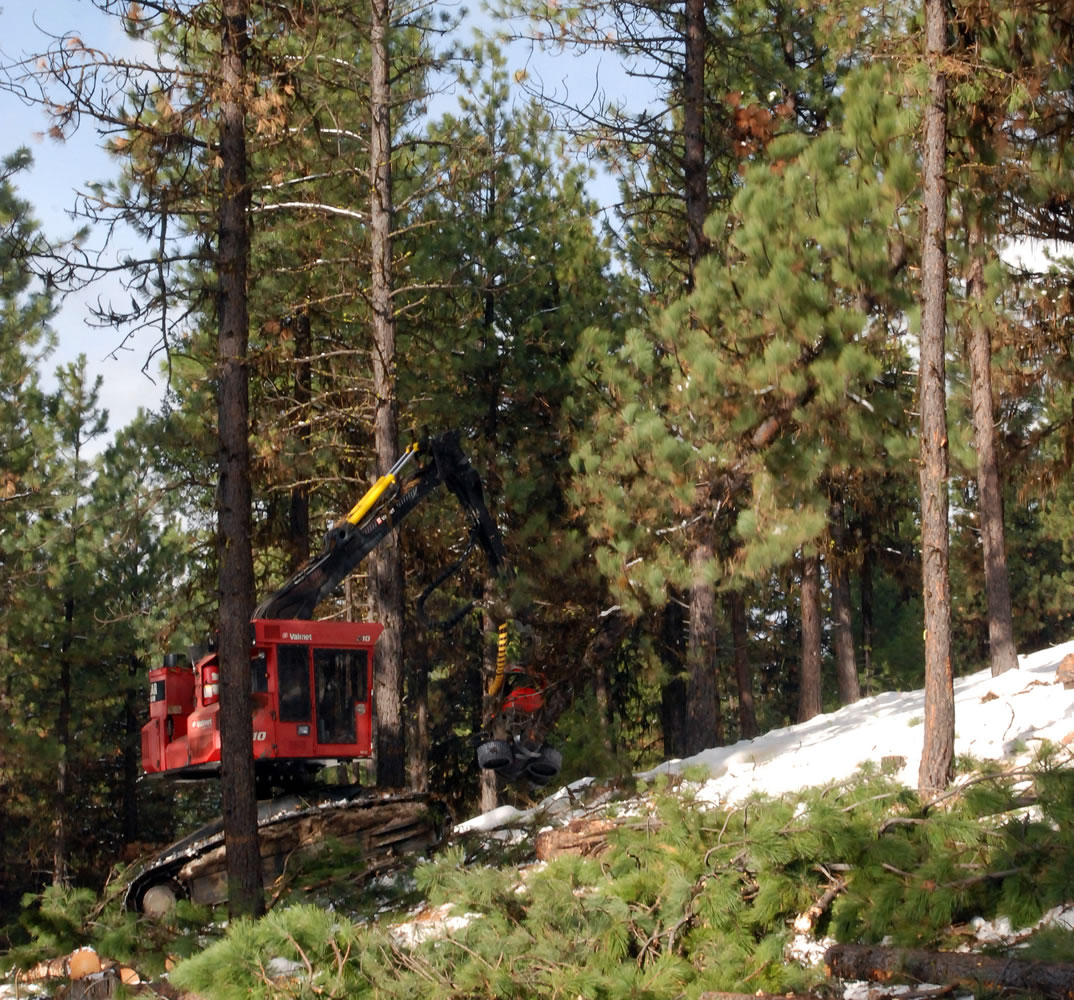JOHN DAY, Ore. — Logs are piled high in the yard of the Malheur Lumber Co. mill in this small town in northeastern Oregon, ready to be sawed into lumber. Steam pours out of the stacks. Trucks loaded with logs roll in.
John Day, a town of 1,700, nearly died two years ago. Its lifeblood, the sawmill, was about to close. So few logs came off the nearby Malheur National Forest, the mill’s owners decided it was time to shut down.
But the mill and the town’s economy were rescued by a detente between the timber industry and environmentalists — foes since the Pacific Northwest’s battles over logging three decades ago. The sides uncovered a shared goal: thinning overgrown forests to prevent catastrophic wildfires.
People in town who don’t trust environmentalists still grumble. But not Art Andrews, manager of Malheur Lumber.
“When I tell people that it’s the environmental community that saved this community, they say, ‘Oh, baloney!’ ” Andrews said. “But I lived it. I know it’s true.”
Mills in timber country have been steadily closing as fighting continues over how to log national forests without killing protected species like spotted owls and salmon. Across the West, there are efforts to build trust among timber interests, environmentalists and local residents, and the U.S. Forest Service hopes the success of John Day serves as a model.
There is little private timber to draw on east of the Cascades. One logging project after another in the Malheur National Forest was shot down by environmentalists’ lawsuits. Meanwhile, the community needed logs.
“We were at a stalemate,” recalled Steve Beverlin, supervisor of the forest.
Then Blue Mountains Forest Partners, a collaborative group designed to bring together all sides of the community — especially environmentalists and the timber industry, formed in 2006 to come up with projects that lawsuits wouldn’t stop.
Out of innumerable meetings and forest tours grew a few key friendships among people who became peacemakers in the timber war. Among them were Mike Billman, timber buyer for the Malheur Lumber Co. mill, and conservationist Tim Lillebo.
“I had never met him, but I’d heard of him plenty,” Billman said of Lillebo. “He was the devil, I guess.”
Lillebo was a founder of the Oregon Natural Resources Council, now Oregon Wild. They first met at a meeting of the collaborative, and they soon found they agreed on most of the issues.
Before long, Billman and Lillebo were getting together for camping trips.
“Early on, we talked about industry, ecological and collaborative things,” Billman said. “As we became better friends, our discussions became about our personal lives, our families and all that.”
They weren’t the only ones. Outside the collaborative, John Shelk, managing partner of Ochoco Lumber Co., which owns Malheur Lumber, decided in 2008 he had to do something and invited Andy Kerr, another founder of the Oregon Natural Resources Council, to his office. By 2009, they were telling others they had a truce.
“We agreed that there was a lot of (timber) to be had from ecological forestry,” Kerr recalled. “And he didn’t want the big trees anyway, so why were we fighting?”
Grant County Commissioner Boyd Britton, a welder who lost customers when two other mills shut down, came to trust and respect Susan Jane Brown, a lawyer for the Western Environmental Law Center who shot down so many timber sales.
Brown said a key shift came when environmentalists started realizing that wildfires posed as big a threat to the forests as logging. And the way to protect the forests was to work with the collaborative to approve projects that thinned overgrown stands while providing enough logs to keep the local mill running.
The atmosphere of trust and respect had reached such a point that when Shelk decided Malheur Lumber had to shut down in 2012, members of the collaborative quickly signed off on delayed forest-thinning projects and developed logging plans that could sustain the mill. Last year, they approved a 10-year “Stewardship Contract” awarded to a local logging company, Iron Triangle.
The company took a chance that it could get enough logs to make the thinning and restoration projects in the contract pay. This year, the mill hired 30 workers. And Malheur National Forest hired 40 people to turn out more restoration projects as it tries to expand the efforts to the other forests in the region.
“Why it worked on Malheur Lumber when it did is because we had the right people involved at the right time for the right reason,” Brown said.



